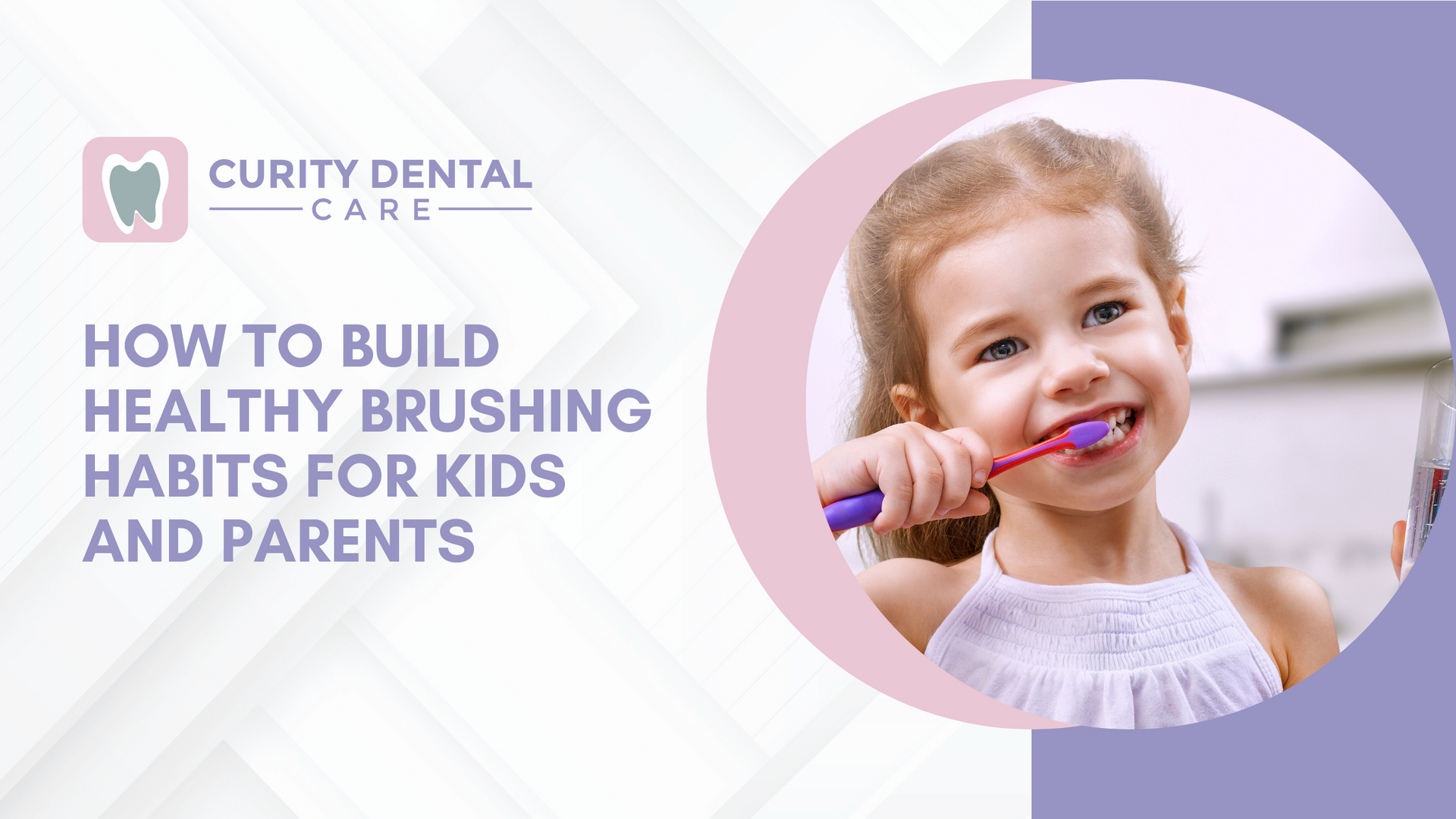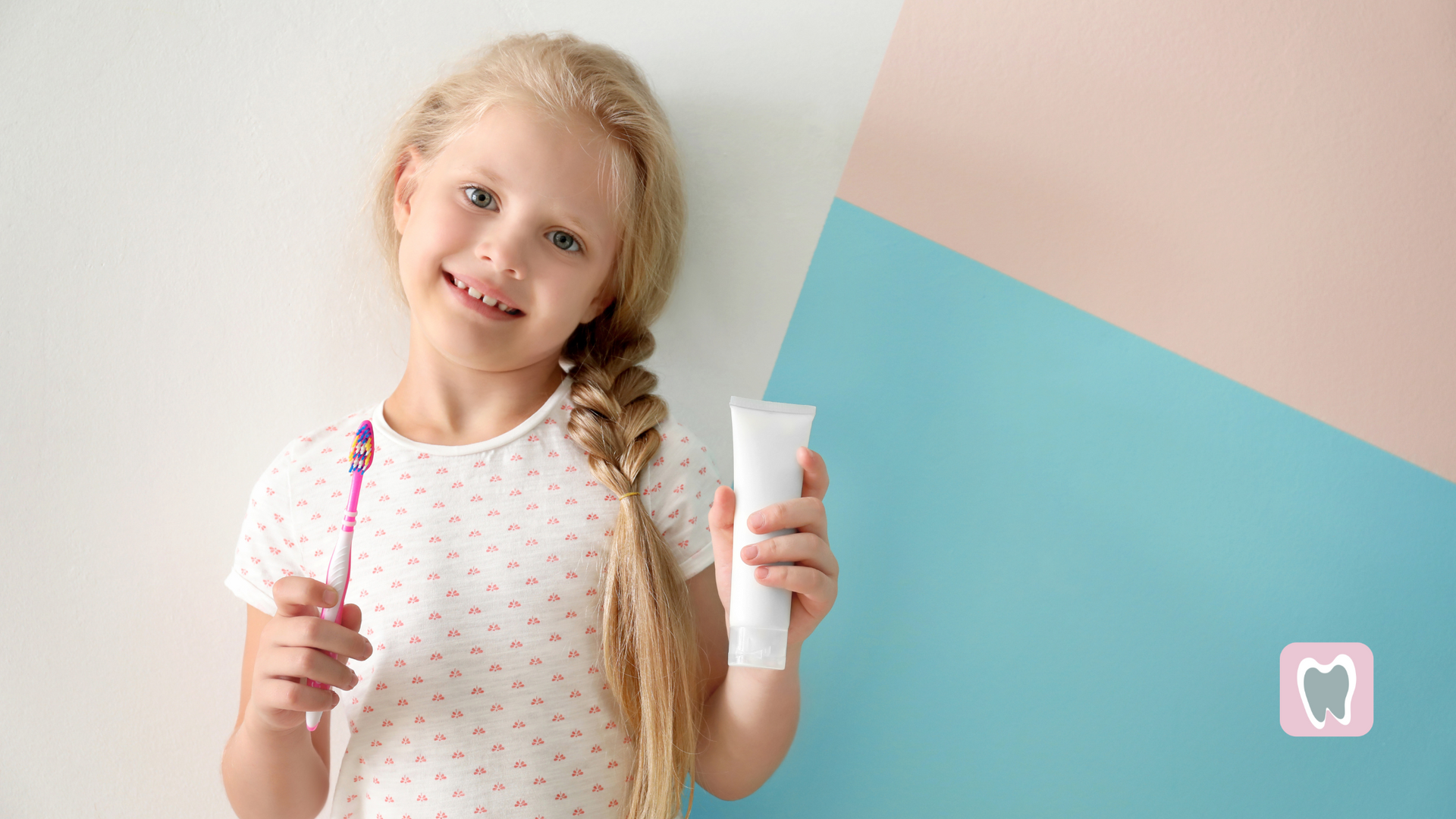How to Build Healthy Brushing Habits for Kids and Parents

Source: Dr. Marketing
Toothbrushing is one of the first habits children learn—often before they can speak full sentences. But while it may seem simple, building strong brushing habits at an early age plays a major role in long-term oral health. For parents, understanding the science behind brushing, correcting common mistakes, and setting an example can make all the difference in shaping a child’s attitude toward dental care.
At Curity Dental Care, we believe in educating families across Toronto to create lifelong healthy routines that support clean, strong smiles. In this blog, we explore the essential facts about brushing and practical tips for parents and kids to keep oral hygiene on track.
When Should Kids Start Brushing?

The journey to good oral hygiene begins earlier than many parents expect. Brushing should begin as soon as the first tooth appears—usually around six months of age. At this stage, a soft-bristled infant toothbrush and water are enough. Toothpaste is introduced later, in small amounts, once the child is able to spit it out rather than swallow.
By age 2–3, children can begin using a smear of fluoride toothpaste (about the size of a grain of rice). As their fine motor skills develop, they can start brushing with supervision. Full independence typically comes around age 6 or 7, though parental oversight is still recommended until the child consistently demonstrates proper technique.
How Often Should Kids and Parents Brush?
Both children and adults should brush twice a day for two minutes—once in the morning and once before bed. Evening brushing is particularly important, as bacteria and food particles left overnight contribute significantly to decay. Flossing should begin once any two teeth are touching. While younger kids may need help flossing, encouraging the habit early helps it become part of the regular bedtime routine.
Consistency is key. When brushing becomes a non-negotiable part of the daily schedule—just like getting dressed or eating breakfast—it reinforces lifelong oral care.
The Technique Matters More Than You Think

It is not just about brushing—it is about brushing well. Many people, both kids and adults, develop poor brushing habits that reduce the effectiveness of their efforts. Here are essential brushing tips for both parents and children:
- Use a soft-bristled brush and fluoride toothpaste.
- Angle the brush at 45 degrees toward the gumline.
- Gently brush in small circles—do not scrub harshly.
- Be sure to brush all tooth surfaces: outer, inner, and chewing.
- Do not forget the tongue, which harbors bacteria and affects breath.
Timers or toothbrushes with built-in timers can help children brush for the recommended two minutes. Songs, apps, or visual cues can make brushing more fun and keep younger kids engaged.
Understanding Plaque and Cavities

Brushing is not just a ritual—it serves a biological purpose. Plaque is a sticky film of bacteria that forms on teeth after eating and drinking. If not removed through brushing and flossing, it turns into tartar and produces acid that erodes enamel, leading to cavities.
Children are especially vulnerable to cavities due to high sugar intake, developing enamel, and inconsistent hygiene. Early childhood caries (ECC), also called baby bottle tooth decay, is one of the most common chronic conditions among children. For parents, monitoring sugar intake (especially sticky snacks and juices), encouraging water consumption, and reinforcing brushing after sweets are simple but powerful ways to reduce cavity risk.
The Role of Parental Influence

Children naturally model the behaviors they observe in adults. When kids see parents brushing and flossing regularly, they internalize that oral hygiene is a priority. Conversely, if a parent neglects brushing, children may not view it as essential. Making brushing a family activity—even if only for the nighttime routine—can instill accountability and normalize the habit. Parents can use this time to praise good habits, correct technique gently, and show that oral care is a shared family value.
At Curity Dental Care in East York, we often encourage families to involve children in dental care decisions—letting them pick a toothbrush color, a toothpaste flavor (approved by a dentist), or even a fun timer to help them enjoy the process.
Busting Myths About Brushing
There are many misconceptions about oral hygiene. Let’s clarify a few important ones:
- Myth 1: “Baby teeth do not matter—they fall out anyway.”
Truth: Primary teeth serve important roles in speech, eating, and guiding adult teeth into place. Neglecting them can lead to pain, infections, and long-term issues. - Myth 2: “Hard brushing cleans better.”
Truth: Brushing too hard can damage enamel and irritate gums. Soft, gentle circles are more effective and safer. - Myth 3: “If my child’s teeth look clean, we do not need the dentist.”
Truth: Cavities and issues can develop below the surface or between teeth. Regular dental visits help catch concerns early. - Myth 4: “Fluoride is dangerous.”
Truth: When used correctly and in appropriate doses, fluoride is safe and critical in preventing tooth decay. It is supported by decades of scientific research.
Brushing Challenges Parents Face—and How to Overcome Them

Parents often encounter resistance from kids when it comes to brushing. Here are a few common challenges—and strategies to address them:
- The “I do not want to!” Phase: Try making brushing part of a game or story. Using role-play (“let us brush the sugar bugs away”) or a sticker chart for consistent brushing can motivate younger children.
- The “I brushed already!” Claim: Supervise brushing when possible, and occasionally check the toothbrush to see if it is wet. Praise honest efforts and provide reminders when needed.
- Discomfort with Toothpaste: If your child dislikes the taste or texture of toothpaste, try different flavors or consult our dentist for recommendations. Some children are sensitive to foaming agents or mint.
- Sensory Issues: Children with sensory sensitivities may find brushing overwhelming. Use a smaller, soft brush and start gradually. Music, visual timers, and a consistent routine can help desensitize discomfort over time.
Partnering With Us

Routine dental visits are essential, even if your child has no obvious dental problems. Professional cleanings remove buildup brushing cannot, and early checkups allow dentists to monitor growth, detect early signs of issues, and provide sealants or fluoride treatments if necessary.
Curity Dental Care in East York is proud to support families with preventive care, education, and customized guidance to make oral hygiene a success for every child. We welcome questions and provide support tailored to your family’s needs.
When to Seek Extra Help
If you notice persistent bad breath, bleeding gums, white or brown spots on the teeth, or complaints of pain, do not delay. These may indicate deeper issues that require prompt attention. Similarly, if brushing feels like a battle every day, bring it up at your child’s next dental appointment. We can help identify underlying causes and suggest age-appropriate solutions.
Start Small, Stay Consistent

Oral hygiene habits begin at home—but they last a lifetime. Brushing is a small, daily act that yields big results when done correctly and consistently. Whether you are just starting with your toddler or trying to correct habits in a school-aged child, remember that progress is more important than perfection.
At Curity Dental Care, we are here to guide families in East York every step of the way—from baby teeth to braces and beyond. Together, we can build strong brushing habits that protect your child’s health, confidence, and happiness for years to come.



